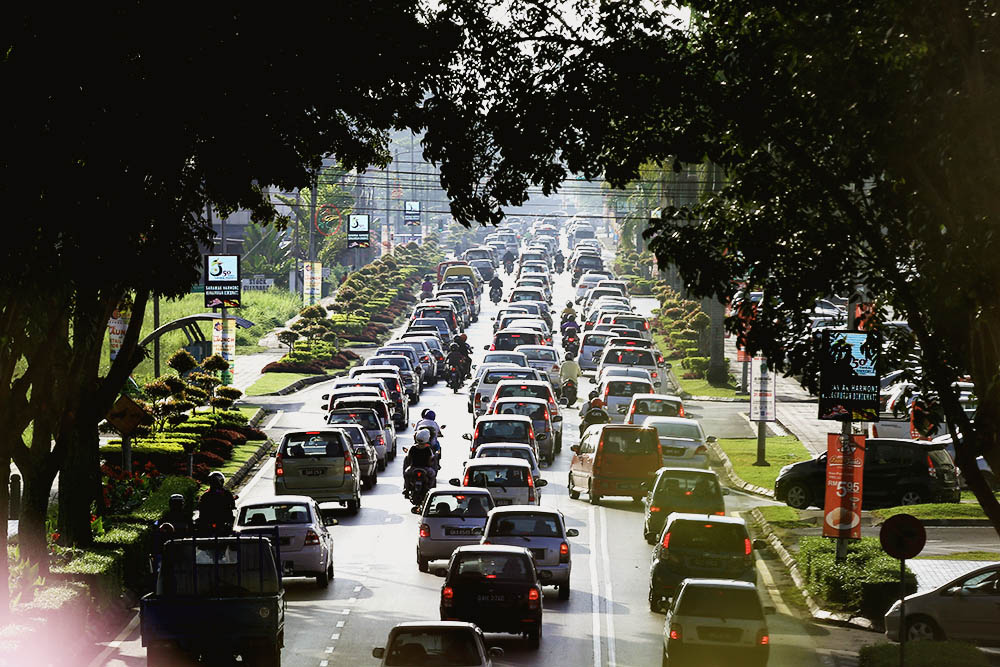A well-planned transportation system boosts the capacity to transport goods and passengers, reduces travel time for people or goods transported from one point to another, and enables newly connected areas to have consumption, production and distribution capabilities.
These allow businesses to, among many other benefits, lower cost, improve operations and reliability, and gain access to more resources and a wider market base.

Kuching city is given priority in Sarawak’s efforts to enhance its transportation system (Photo from outled.my)
Perhaps the most advantageous of establishing an efficient and reliable transportation system is how the aforementioned benefits for business positively affect the livelihood of the people themselves.
By having greater mobility, they are no longer restricted to earning a living within their own locality because they are now able to pursue what they hope to be a better life in other places.
Accelerating socio-economic development through their transportation systems is what countries around the world strive to achieve.
Sarawak is no exception to this, and is currently in the midst of improving road connectivity from southern to northern regions through mega projects such as the Pan Borneo Highway and the Coastal Road Network.

Traffic at Jalan Satok, Kuching. Sarawak aims to minimise and alleviate traffic congestion in urban areas through its smart city initiatives (Photo from outled.my)
It is also focusing on enhancing its transportation system in its urban areas to better address traffic congestion, longer travel distances, increased number of vehicles, and other challenges brought about by rapid urbanisation.
As the largest city in Sarawak, Kuching is given priority in this effort due to being the administrative capital and the economic centre of the State, as well as its proximity to Samarahan and Serian Divisions, where the people from there frequently commute to the city.
To that end, Sarawak is implementing several smart city initiatives to improve Kuching’s transportation system, which are also in line with its digital economy agenda.

A briefing to delegates from Ministry of Transport Sarawak on the Smart Traffic Lights System and Control Centre pilot project in February 2020
Smart Traffic Lights System and Control Room
The Smart Traffic Lights System and Control Room is a pilot project conducted collaboratively by the likes of Sarawak Multimedia Authority (SMA), Public Works Department (PWD) and local councils in Kuching. If successful, the project will be expanded to other major cities and towns in Sarawak.
Its goal is to improve traffic management system by enhancing the performance of existing traffic lights control system, developing remote traffic junction monitoring and traffic control, and integrating traffic light operations under a common platform akin to Australia’s Sydney Coordinated Adaptive Traffic System (SCATS).
It also aims to achieve a fully coordinated and adaptive traffic control capability in order to manage road traffic networks in real time, reduce the number of traffic light stops, reduce waiting time at traffic lights, enhance data modelling, enable future simulation modelling and enable future interface with multi-modal traffic control system.
At the start of the project in November 2019, 42 key junctions in the Greater Kuching area were selected to be upgraded to smart traffic light equipped with digital countdown and CCTV for live feed. Since then, 22 junctions have been upgraded (as of February 2020).
Kuching Urban Transportation System
Kuching Urban Transportation System (KUTS) will serve as the backbone transportation system of Greater Kuching.
With civil and structural works expected to take place in 2022, the system aims to minimise and alleviate traffic congestion towards Kuching city centre, link vital areas within Kuching and Samarahan Districts, and promote green transportation technology.
At the heart of this project is the Automated Rapid Transit (ART) system, a railless guided bus system that is described as a “cross-over” between a bus, a train and a tram.
The use of this urban passenger transport system will make KUTS the first automated rapid transit system in the world that is powered by hydrogen fuel cells and run on virtual tracks.



